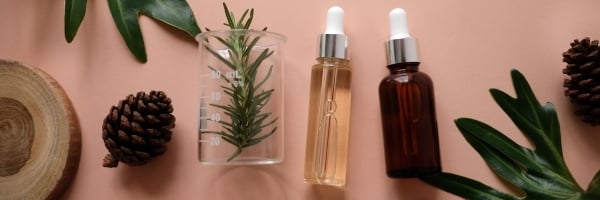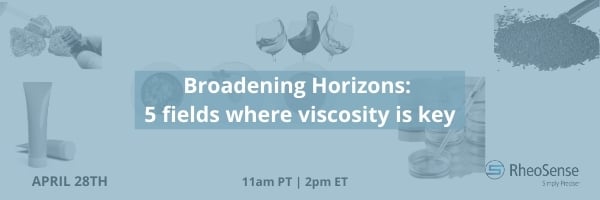Viscosity plays a huge role in our day to day lives. Viscosity affects the things we cook and what we cook them in, the oil in our car, the ink we use to print out documents, and in all the self-care products we use every day. The toothpaste we use has a much different viscosity from the mouthwash we use, or the lotion we apply when our skin is dry.
The viscosity of cosmetics products varies across a wide range from serums, foundations, face wash and mascara, to list a few. Viscosity testing is an important parameter for both production and quality control of cosmetics process. Measuring the viscosity of cosmetics and cosmeceuticals allows manufacturers to predict how the products will behave once distributed to consumers and helps to ensure the product quality and user experience are excellent. Understanding the viscosity of a finished products also helps manufacturers create efficient production processes and protocols, and reduce production costs. (Inventech)
Formulation ingredients in cosmetic serums, lotions, and other products (such as face wash) can vary dramatically and can also dramatically alter the performance of the products. Skin care products and serums are one popular product that have a wide range of uses, targeting acne control, hydration, or promote rejuvenation and anti-aging of skin to name a few common target areas. Skin care products are comprised of multiple materials including polymers, oils, waxes, gels, and silicones (Sharma et al. 2018). The viscosity of different serum formulations is directly dependent on the ingredients used. Knowing how the different ingredients affect the rheology of the product formulations will help guide product development.

“The characteristics of serum formulations are driven by customer and manufacturing needs. Customers want products that feel “luxurious” (high viscosity) but also penetrate and moisturize their skin (low viscosity).” (RheoSense, Characterizing Cosmetic Serums). The varying formulation ingredients make cosmetics development a dynamic process that requires thorough characterization experiments to differentiate between the different formulations.
RheoSense VROC® (Viscometer-Rheometer-on-a-Chip) viscometers are designed to simplify viscosity measurements, even for complex cosmetic formulations! With VROC viscometers you are able to control shear rates, providing accurate and reliable dynamic viscosity measurements over a wide dynamic range of operation. You can measure your cosmetic and cosmeceutical products on our small portable microVISC viscometer, which is ideal for quick measurements and quality control. Or, on our m-VROC or VROC initium viscometers ideal for performing rate sweep experiments to characterize different serum formulations.
Download our webinar recording "Broadening Horizons: 5 fields where viscosity is key" to learn more about measuring the viscosity of cosmetics and cosmeceuticals!
Written by: Eden Reid, RheoSense Senior Marketing Associate



